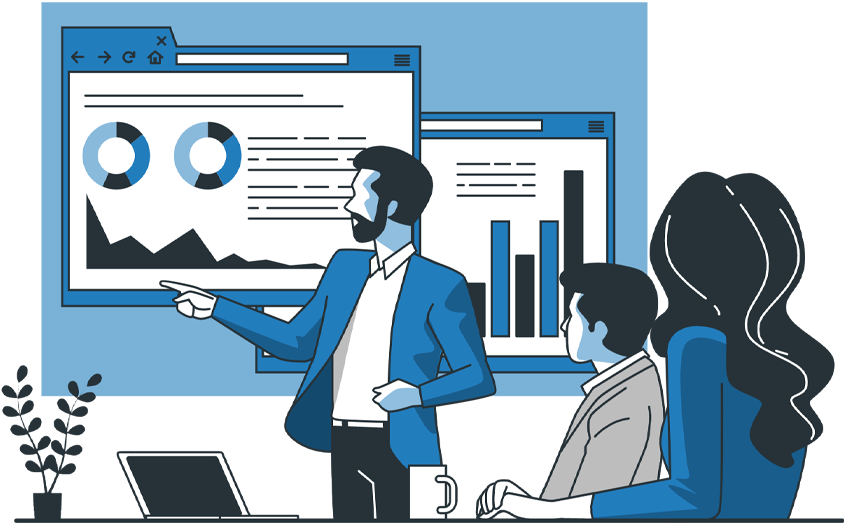
Enterprise Agility
Digital Enterprise Agility
To match the accelerating speed with which their market sectors are changing, companies must take a broader approach to becoming innovative—an approach that we refer to as ‘enterprise agility.’ By that, we mean an organization that can adapt all the core elements of its business—its strategy, product and service offerings, the business processes that create and fulfill demand for those offerings, its people’s skills, and technology and IT infrastructure—at the pace that’s required to stay competitive and solvent. That, in turn, means adopting a lean-agile culture throughout the organization, not just in software development.
GROW WITH TECHNOLOGY
Pushing Innovation to the Edge of the Organization
Broad dimensions to achieving enterprise agility—strategy and process
Strategy Formulation: A key step in enterprise agility is outlining a company’s innovation strategy: what it seeks to accomplish through innovation, and how. This strategy requires executives who are aligned, engaged, and committed to innovation. They must communicate consistent messages across the enterprise about the goals, why they matter, and how every employee in every function and group can contribute. Top managers must then encourage the next level of leaders to successively spread, contextualize, and reinforce those same messages in their business units and functional areas.
Cultural transformation to change values, beliefs, mindset, and behaviors at all levels:
Cultural Transformation: But developing and communicating an innovation strategy is not nearly enough. Leaders must give their people the motivation, training, and tools to make it a reality. They must encourage continuous dissatisfaction with the status quo, while rewarding creativity. Leaders must also develop competencies in lean- agile techniques:
Empowered teams who can develop minimally viable products and services to test with customers, to ‘fail fast’ and learn from iterative attempts.
Systems thinking: focusing on how a system’s parts interrelate, and how that system works within larger systems.
Design thinking: idea-generation and problem-solving that looks at human behavior and needs, in addition to business and technology factors.
Focused Experimentation
Leaders must set up a system to vet incoming ideas for market relevancy and technical and financial practicality, by testing and improving them with feedback from customers (or, customers’ proxies, such as market experts or customer service representatives, when actual end- customers are not ideal evaluators for confidentiality or competitive reasons).
No Time to Lose
Now is the time to develop enterprise agility. Many companies face imminent threats from the changing business environment, with crowdsourcing of new ideas, open source technology, and a myriad of service providers with niche skills, products, and services that are readily available via digital channels. They are all seeking connections with your customers.
